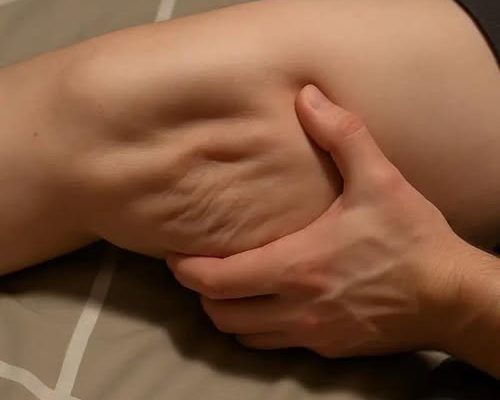Understanding Nighttime Leg Cramps: Causes, Risk Factors, and How to Find Relief

Nighttime leg cramps, also referred to as nocturnal leg cramps, are a surprisingly common condition that affects millions of people worldwide. These cramps involve sudden, involuntary contractions of the muscles—most frequently in the calf, though they can also occur in the thigh or foot. They typically strike during sleep or periods of rest, often waking sufferers with a sharp, searing pain that can last anywhere from a few seconds to several minutes. Even after the cramp passes, lingering soreness and muscle fatigue can persist for hours or even into the following day.
While anyone can experience nighttime leg cramps, they tend to become more frequent and intense with age. Many people describe the sensation as a tight knot or spasm that grips the muscle, making it difficult to move or stretch. In severe cases, the cramp may cause the toes to curl uncontrollably or the leg to stiffen completely. Such episodes can be not only physically painful but also emotionally frustrating, especially when they interrupt a restful night’s sleep.
What Causes Nighttime Leg Cramps?
There is no single cause for nighttime leg cramps, but rather a variety of contributing factors. These cramps are often linked to muscular fatigue, electrolyte imbalances, dehydration, and circulatory issues, among others. Let’s take a closer look at some of the most common and widely recognized causes:
1. Electrolyte Imbalances
Muscles require a delicate balance of minerals like magnesium, potassium, calcium, and sodium to function properly. These minerals, known as electrolytes, help transmit electrical impulses that facilitate muscle contractions and relaxations. When these levels become unbalanced—due to poor diet, excessive sweating, vomiting, diarrhea, or certain medications—muscle cells can become hyperactive, resulting in spasms or cramps.
2. Dehydration
Water plays a critical role in maintaining muscle function. When the body is dehydrated, it struggles to regulate temperature, blood flow, and electrolyte balance—all of which can increase the likelihood of cramping. Athletes, individuals who spend time in hot environments, and people who do not drink enough fluids throughout the day are especially at risk.
3. Poor Circulation
Conditions that impact blood flow, such as peripheral artery disease (PAD), diabetes, or prolonged periods of inactivity, can deprive muscles of the oxygen and nutrients they need. Reduced circulation, particularly in the lower limbs, can contribute to nighttime cramping by creating an environment where muscles fatigue more easily and are slower to recover.
4. Muscle Overuse or Fatigue
Overexertion, especially from vigorous exercise or standing for extended periods, can lead to microtrauma in muscle fibers. As a result, the muscles may tighten or seize up during rest or at night. This is particularly common among athletes, laborers, and individuals who suddenly increase their level of physical activity without adequate stretching or conditioning.
5. Prolonged Inactivity or Poor Sleeping Position
Surprisingly, being too sedentary can also contribute to leg cramps. Sitting or lying in certain positions for long periods may compress the nerves or restrict blood flow, leading to muscle stiffness and cramping. Sleeping with the toes pointing down, for example, can shorten the calf muscles, increasing the risk of spasms during the night.
6. Deficiency of Key Nutrients
Inadequate intake of vitamins and minerals—especially magnesium, potassium, calcium, and vitamin D—can impair nerve function and muscle control. Older adults, in particular, are at risk of such deficiencies due to dietary changes or poor absorption of nutrients.
7. Pregnancy
Pregnant women frequently experience leg cramps during the second and third trimesters. The causes are multifactorial and may include changes in blood volume, pressure from the growing uterus on nerves and blood vessels, and increased demands for minerals like calcium and magnesium.
8. Medications
Several medications have been linked to an increased risk of muscle cramps, especially when taken over a long period. These include:
-
Diuretics (used for high blood pressure and heart failure)
-
Statins (used to lower cholesterol)
-
Beta-blockers
-
Asthma medications
-
Hormone therapy
If you suspect your medication is contributing to cramps, consult your healthcare provider before making any changes.
9. Medical Conditions
A variety of underlying chronic health conditions can predispose individuals to nighttime leg cramps, including:
-
Diabetes
-
Kidney disease
-
Thyroid disorders
-
Liver disease
-
Neurological conditions (such as multiple sclerosis or neuropathy)
Who is Most at Risk?
Nighttime leg cramps can affect anyone, but certain groups are more prone to them:
-
Older adults (age-related muscle loss and poor circulation)
-
Pregnant women
-
Athletes and manual laborers
-
People who are sedentary for long periods
-
Individuals with chronic illnesses
-
People taking certain medications
Understanding your risk can be the first step toward prevention.

How to Prevent and Manage Nighttime Leg Cramps
Although nighttime leg cramps can be unpredictable, many people find relief through a combination of lifestyle adjustments, preventive strategies, and, in some cases, medical treatment. Here are some helpful tips:
✅ Stay Hydrated
Drink plenty of water throughout the day, especially if you exercise or spend time in hot weather. Consider electrolyte-rich fluids like coconut water or sports drinks after intense activity.
✅ Stretch Before Bed
Gentle stretching exercises, particularly targeting the calves, thighs, and hamstrings, can help keep muscles loose and relaxed during sleep. Yoga or foam rolling may also be beneficial.
✅ Maintain a Balanced Diet
Include foods rich in magnesium (like nuts, seeds, and leafy greens), potassium (like bananas, avocados, and sweet potatoes), and calcium (like dairy products and fortified cereals).
✅ Check Your Sleeping Position
Try sleeping with a pillow under your knees or keeping your toes pointed upward. Avoid tucking the blankets too tightly around your feet, as this can cause your feet to point downward unnaturally.
✅ Wear Proper Footwear
Supportive shoes with good arch support can help reduce leg strain during the day, minimizing cramping at night.
✅ Stay Active—but Don’t Overdo It
Regular, moderate physical activity can help improve circulation and muscle tone. However, avoid overexertion and ensure you warm up and cool down properly.
✅ Talk to Your Doctor
If leg cramps persist, become frequent, or are associated with other symptoms, seek medical advice. Your provider may recommend blood tests, adjust medications, or refer you to a specialist if needed.
Final Thoughts
Nighttime leg cramps are more than just a nuisance—they can disrupt sleep, impact quality of life, and signal underlying health issues. Fortunately, by understanding their causes and making targeted lifestyle changes, many people can dramatically reduce their occurrence and intensity.
Whether you’re dealing with the occasional cramp or nightly episodes, paying attention to your body, staying hydrated, and maintaining a healthy balance of activity, nutrition, and rest can go a long way toward ensuring more peaceful, cramp-free nights.



